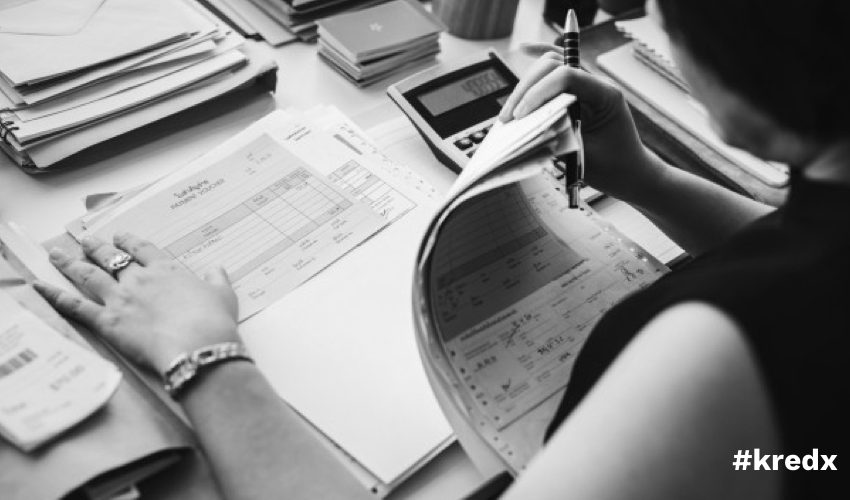
GST E-Invoicing Mandatory For MSMEs From 1 October
An assortment of borrower-friendly schemes, assistance to MSMEs, and above all, digitalisation, has significantly contributed to India’s business environment. As per the Ease of Doing Business Report 2020, India ranked 63rd, a stride forward by 14 places from 2019.
To further this trend, the 37th GST council has introduced a system of e-invoicing under GST for all MSMEs from 1 October 2020. The Central Government expects this move to streamline GSTR and e-way bill filing, and allow enhanced communication between businesses.
Although only MSMEs qualifying a specific criterion are mandated to follow this new regime, the Centre recommends all enterprises to follow this system of e-invoicing under GST.
What Is E-Invoicing Under GST?
E-invoicing under GST is not a way to generate invoices/bills on the GST portal, as it may suggest. Rather, an MSME continues to generate bills as standard.
What changes is how you report invoices in GSTR-1 and Part A of e-way bills. Now, you will only need to submit prepared bills to the e-invoice portal. An Identification Reference Number or IRN will be generated against a bill.
This way, the bill is authenticated, and all your invoice details are automatically transported to the e-way bill portal and GST portal in real-time. In other words, GST e-invoicing is basically a means to authenticate B2B bills.
Which MSMEs Need To Follow GST E-Invoicing?
All MSMEs with an annual turnover of Rs. 500 crores are obligated to authenticate their e-invoices via the GSTN portal.
If the aggregate turnover of all GSTINs registered under a PAN is equal to or higher than Rs. 500 crores, the same mandate applies to that entity as well.
The following entities are not required to submit e-invoices under GST –
- Goods transport agency
- Financial institutions, including banks, NBFCs, and insurance companies
- Special Economic Zone (SEZ) units
- Supplier of cinematograph films in multiplexes
- Provider of passenger transport services
What Is The Process of E-Invoicing Under GST?
Here’s a step-by-step guide to how this system works –
Step 1 – The seller submits the e-invoice to the IRP portal.
Step 2 – IRP puts the registrar’s signature on the e-invoice, forwards it to the GST portal, signs, and adds a QR code to the JSON.
Step 3 – The JSON is sent to the seller.
Step 4 – In the GST system, details concerning outwards/inwards supply are updated in the GSTR-1 of the seller and GSTR-2A of the buyer.
Hence, it eliminates the hassle of manually inputting invoice details.
What Are The Benefits Of GST E-Invoicing?
This system entails several benefits for MSMEs, a few of which are –
- Saving your enterprise’s considerable time, required to report invoice specifics in GSTR and e-way bill.
- Helping to enhance efficiency.
- Streamlining the payment cycle.
- Minimising the errors in reconciliation.
- Simplifying Input Tax Credit or ITC.
Besides these, you can opt for the benefits of an invoice discounting facility easily by adhering to this system, since the bills will be already authenticated.
Financiers will be more certain of the legitimacy of those bills, thus, expediting the verification process.
The Central government is aiming to curtail GST frauds, tax evasion, and wrongful reporting of ITC with the e-invoicing system.
What Happens If An MSME Is Non-Compliant?
Alongside penalty, there are other complications an enterprise may face if they are not compliant with the new GST laws. These are –
- Any invoice that’s not validated by the IRP cannot be considered a legitimate piece of document. You may need to pay a fine up to Rs. 10,000 if that’s the case.
- You cannot transport goods without a valid e-invoice. Such goods might be detained, or you may have to pay the penalty on the same.
- Government plans are underway to prevent e-way bill generation without an IRN.
- Clients might refuse to pay their dues if e-invoices remain unauthenticated.
Hence, it is vital for your enterprise to tweak the e-invoicing process accordingly to accommodate the new GST norms.
What Changes Do You Need To Make?
Wondering how much hassle this process involves?
Well, to your relief, not much. Your enterprise continues to generate bills as it always has.
But, you will need the latest accounting software that facilitates the submission of the invoice details to IRP.
That’s about all you need, to initiate this change in your enterprise.
Bottom Line
The digitalisation of tax payments and other business processes has added notable value to the MSME culture in India. The e-invoicing under GST is another move that is expected to foster better communication between businesses, ease filing GSTR and preparing e-way bills, and ultimately enhance efficiency. It also streamlines the process of availing funds against unpaid bills via facilities like invoice discounting.



